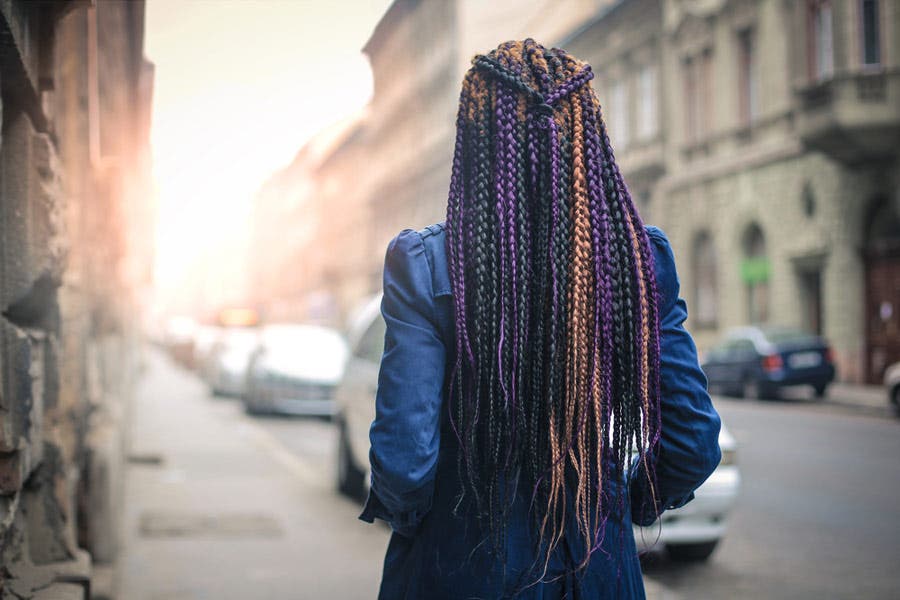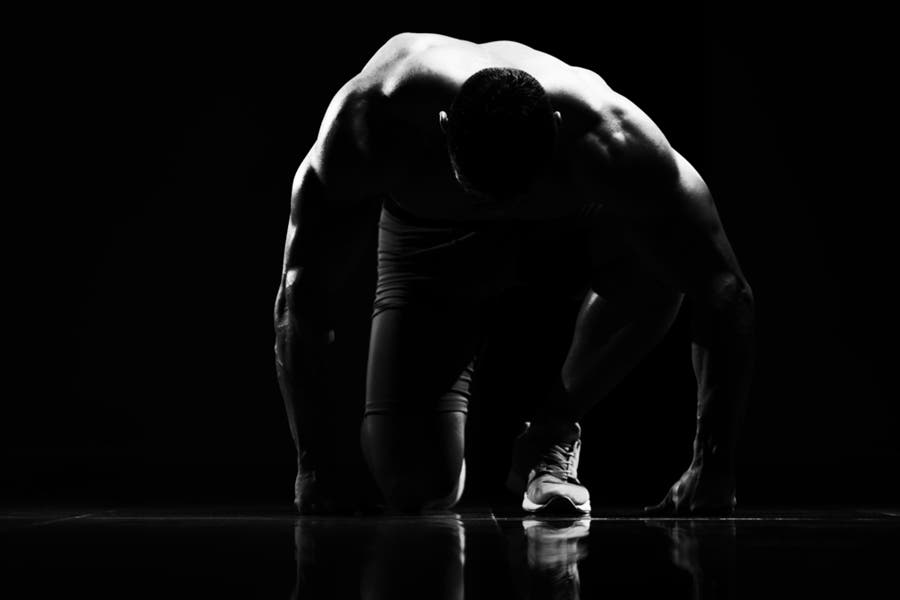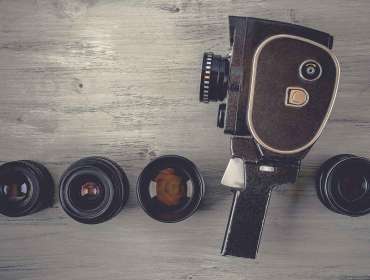Portrait photography is a very popular category in the imaging world, as it features the most commonly photographed subject—people. When done properly, and with carefully composed photographic elements, it’s a great way to represent and capture the personality of a person whether you include the subject’s face or try out faceless portrait photography instead.
But, what happens when you go beyond the norm and obscure facial features? The absence of a face does not and should not stop a portrait from representing a human subject, but rather, it should give the subject and shooter an opportunity to find other creative ways to tell a story. And since people interpret them differently, there’s obviously some added interest and drama that allows faceless portraits to evoke a mix of emotions from its viewers.

Why Would You Want to Capture Faceless Portraits?
Portraiture that shows the subject’s face usually draws the viewer’s attention to the face and eyes first. Faceless art and minimalist portrait photography instead lets the viewer place themselves in the subject’s position and helps them feel a stronger connection to the location, energy, or style of the photograph.
Choosing to obscure a portrait subject’s face can create a more universally appealing image. This can improve how people engage with and respond to your image in print or on social media.
Faceless photography can take many forms, from street photography and portrait photography to travel photography and lifestyle photography.
Faceless Portraits Highlight Interesting Details About the Subject
While a face or a smile can tell you a lot about a person, a faceless film or digital portrait can highlight other key aspects of your subject.
Features like hairstyle, choice of clothing color and style, the relationship between two faceless subjects, and even the way a subject holds their body in relation to their environment can become the focus. You can explore so much more about a subject and create high-quality, emotive images when their face isn’t front-and-center.
Savor the Subject’s Surroundings
We’ve all spent hours scrolling through eye-catching images on our devices. Some of the most compelling photographs in natural or urban environments feature simple silhouettes or images of a subject taken from behind.
When the viewer isn’t distracted by faces, eyes, and smiles, they can more easily experience the location of the image, whether it’s a mountain vista, a sandy beach, or a mural-filled wall. Challenge yourself to create custom faceless portraits in a range of locations to see how you can call more attention to the surroundings in the photo.
Abstract Anonymity as a Compelling Storytelling Device
Portraits without faces introduce a sense of abstract anonymity to your digital art or photographs. By featuring bodies, body language, and body connections, you can tell a more relatable story.
Next time you are looking for portrait photography or wedding photography inspiration or even just educational tutorials, check out work by photographers who tell compelling stories using their subject’s body language, hands, or silhouettes.
Sharpen Your Composition Skills
Even the most seasoned portrait photographers can start to feel like their work is stagnating. If you find yourself repeating the same framing or the same portrait angles over and over, you may want to consider portraits without faces. They could be the creative challenge you need to rethink how you approach portrait sessions.
In many ways, faceless portraits represent a level-up in terms of skill, planning, and composition. By pushing yourself to explore unique directions for faceless minimalist portraiture, you can unlock a new direction for your work.
Tips for Capturing Faceless Portraits
By taking faceless portraits, we make our photos more open to interpretation and allow the viewers to place themselves into the image or story. It’s imperative that we use the body and the environment to make the portraits intriguing enough for others to want to understand and stare at the image a little longer.
Below are a few helpful tips to consider with faceless portrait photography:
- Practice Storytelling in Your Photos
- Help the Viewer Understand Your Photography with Context Clues
- Focus on Your Faceless Portrait’s Composition
- Zoom Out to Give Your Portrait More Space
- Focus Your Lens on Interesting Details
Practice Storytelling in Your Photos

Not all faceless portraits are planned and well-thought-out. It could be as easy as snapping a photo of a relative looking away at a family gathering or a child covering her face with a toy. You may have even taken a faceless portrait on a whim while you were busy documenting your travels in a foreign land. But whether the shooting situation is controlled or spontaneous, there has to be a good story behind it. It’s what will make you want to aim your camera at a human subject and your viewers want to understand the resulting image, even when the subjects aren’t smiling or showing any facial expressions.
Help the Viewer Understand Your Photography with Context Clues

This is the step where you choose what to show in your image. Is it going to be a headshot with facial features covered? A half body or whole body shot? Will you be including other elements that can help tell your story? Just as faceless portraits are open to interpretation, photographers are free to include obvious or vague context clues that will send their desired messages to their audience.
Mind how the head (and the rest of the body) is positioned, as well as where the subject is placed. Use props that can help support your story. Even the lighting can help set the mood that will complement the idea behind your photo. Try to keep the context clues strong and few, so they don’t end up confusing your viewers.
Focus on Your Faceless Portrait’s Composition

No matter what kind of photography style you’re planning to try out, shooters are obligated to compose their images properly. Proper composition is key to achieving a “whole” image that looks visually appealing and professional. Read up on composition techniques, such as the Rule of Thirds and balance, when thinking of where to place your subjects and other elements within your frame.
It may be hard to fully customize a photo when shooting in public or outdoors, but keeping in mind what makes a well-composed photo can at least guide you in framing your shots and ensuring photographic balance every time.
Zoom Out to Give Your Portrait More Space

Everybody has seen zoomed in portraits of people. Avoid the trend and possibly come up with more interesting results by maintaining your focal distance, not unless you’re actually a tad bit too far from your subject. Use the extra space in your frame to feature other elements that can set the image apart from others and pique the curiosity of your viewers. After all, faceless portraits are about telling a story using anything that can surround the subject’s face and head.
Focus Your Lens on Interesting Details

A person’s back (or torso and lower body, if shooting front-facing subjects with their heads cropped out) simply isn’t all that interesting to look at. Facial expressions make a photo interesting without much effort, but since you can’t rely on them in a faceless portrait, you have to improvise by highlighting other details. You can make any faceless photo more engaging just by focusing on the subject’s body language, unique features in their hair or clothing, and eye-catching elements in the surrounding environment, and added props.
Don’t be afraid to have very few props and elements to include in your frame. Sometimes, all you need to focus on is right on your subject’s bodies. Capture the details of the person’s hair, hands, or even feet—you’ll find that even the subject’s wrinkles and textures of the skin can already tell a one-of-a-kind story.
Another way to capture emotion or feeling in a photo without showing the face is by capturing the subject’s movements and body language. The more candid, the better.
Ideas for Creative Faceless Portraits

To give you more specific ideas for your faceless portraits, here are a couple of suggested poses, actions, and concepts for you to try out. You’ll be surprised how easy it is to create great faceless portraits and how fun it is to try and tell a story without featuring your subjects’ faces!
- Experiment with Mirrors to Comment on Sense of Self
- Creative Silhouettes for More Painterly, Watercolor-Style Digital Art
- Obscure the Subject’s Face with Other Body Parts
- Bring Energy with a Faceless Look-Away Pose
- Introduce Props, Objects, or Products to Block the Face
Experiment with Mirrors to Comment on Sense of Self

Some of the most interesting faceless self-portraits use mirrors to cover their faces. Using mirrors instead of any other prop instantly adds a unique mystery that can leave your viewers with unanswered questions, such as whether or not the use of the item actually has a deeper meaning. For others, seeing an oval mirror in place of the head gives them a rather unsettling feeling, but the concept holds their attention nonetheless.
Creative Silhouettes for More Painterly, Watercolor-Style Digital Art

Silhouettes are also great for representing a human subject without actually showing the face or exposing the subject with any fill light. Simply place your subject against some good background lighting, like a beautiful sunset or even a studio flash, that will show off your subject’s outline. Make sure the outlined and silhouetted subject is distinguishable to achieve the desired dramatic effect.
Obscure the Subject’s Face with Other Body Parts

We look at faces and observe facial expressions everyday, and this influences us to instantly look for faces in portraits. But in faceless portraits, viewers are forced to take in other elements, particularly the rest of the body. Utilizing the subject’s hands, arms, legs, or even the hair to cover the face and/or strike poses that will grab the usual attention away from the face all help in creating fascinating faceless portraits.
Bring Energy with a Faceless Look-Away Pose

The easiest way to hide the subject’s face, aside from covering it, is to leave it out of the frame or to instruct the subject to look in a different direction. By doing so, you allow your viewers to look at other parts of the frame and the subject’s body language to be able to interpret the photo.
Instruct your model to look down, towards the side, or in the opposite direction facing the background and allow them to come up with thought provoking poses. Or, you can simply surround your model with props and allow those to give your viewers an idea about what’s happening in the image.
Introduce Props, Objects, or Products to Block the Face

Many faceless self-portraits use props that are round or square-ish to add a touch of mystery and evoke certain emotions. You can use objects that are similar to the shape of your head, things or food that your subject likes, or even items that are often held up close towards the face. To make it more striking, use an object that contrasts (whether visually or contextually) with the subject’s environment, such as in the photo above.
Below are just a few suggestions for objects that you can use:
- Camera
- Bouquet of flowers
- Balloon
- Coffee cup
- Book
- Polaroid print
- Piece of paper with writing or drawing
Conclusion
There are many ways to create a compelling faceless photograph to suit any genre that interests you, from street photography to wedding photography. Silhouettes lend themselves well to scalable vector art and custom illustrations, while faceless environmental portraits are ideal for product photography and creating compelling lifestyle images.
With a little practice, you can infuse your portfolio with faceless portraits.






